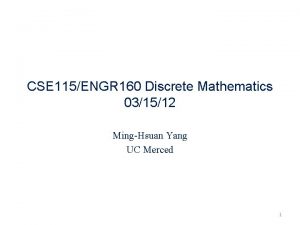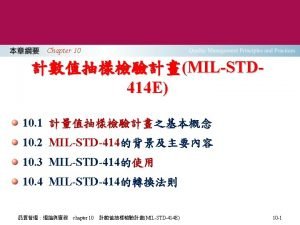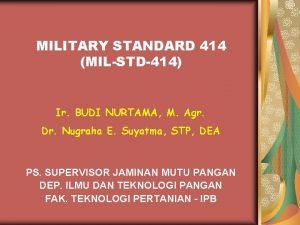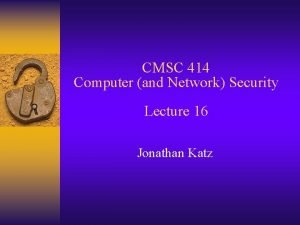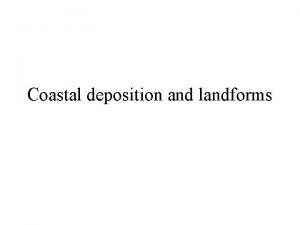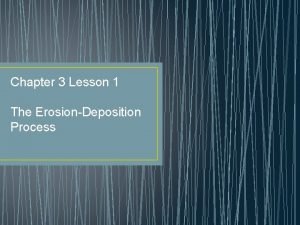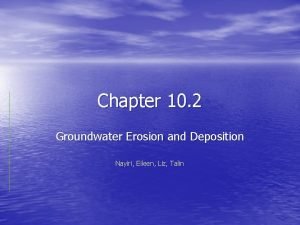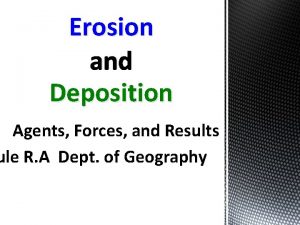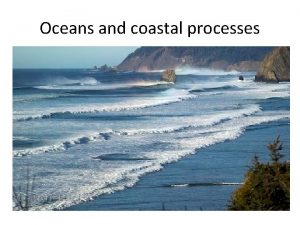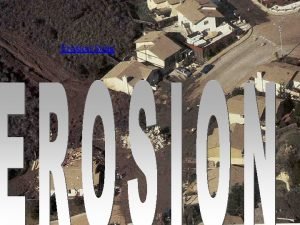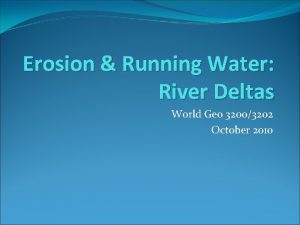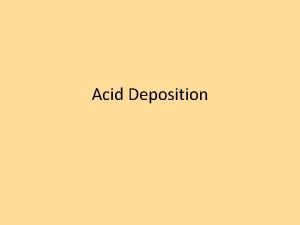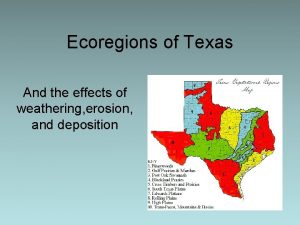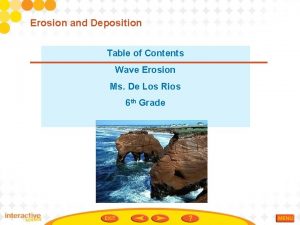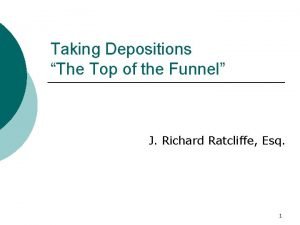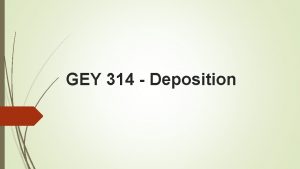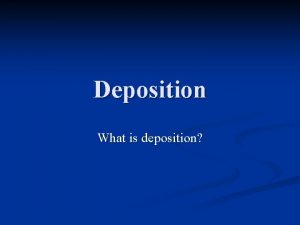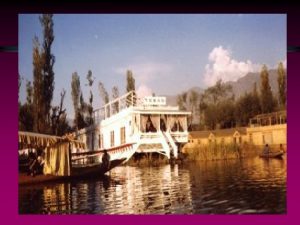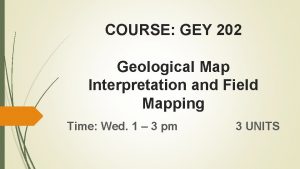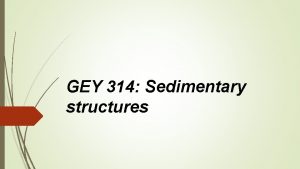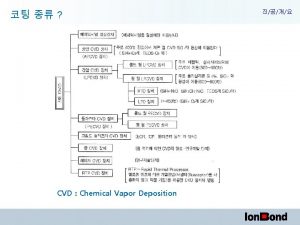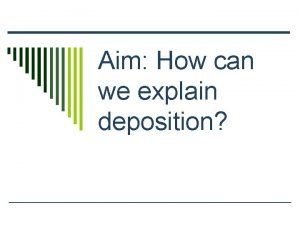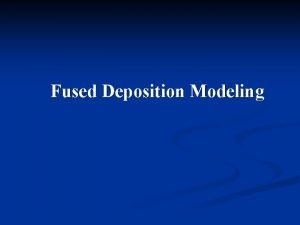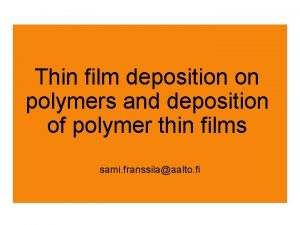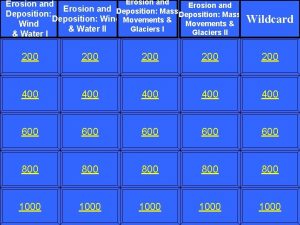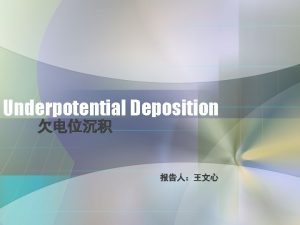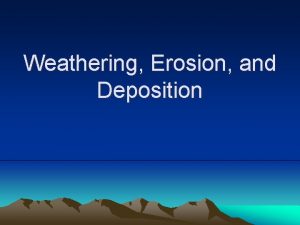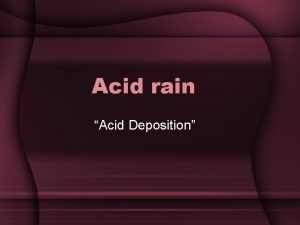GEY 414 Deposition Deposition 2 n n n

























- Slides: 25

GEY 414 - Deposition

Deposition 2 n n n Deposition is a constructive process that lays down or places weathered and eroded materials in a location that is different from their source. Deposition is not specific to a single weathering, erosion, or mass wasting event, but is applied to any consolidated or unconsolidated materials that have accumulated as a result of some natural process or agent. Deposits can result from mechanical, chemical, or biological weathering, and water, wind, ice, or gravity-related erosional processes. The accumulation of deposited materials alters the landscapes and builds various landform features. For example, floodplains are large depositional landforms built by the accumulation of fluvial deposits, and sand dunes are depositional landforms built by wind-related processes. Colluvium is the term used to describe weathered and eroded rocks, soil, and sediments deposited at the base of a hill slope or cliff by the force of gravity and mass wasting. Alluvium is a term used to refer materials deposited by running water. The talus slope on the left is colluvium and the alluvial fan on the right is alluvium. Copyright©John Ballard Copyright© Marli Miller

Deposition: the dropping of transported materials (sediments), or the process by which transported materials are left in new locations. Also known as Sedimentation There is no deposition without erosion.

Factors affecting deposition Particle size: the larger the particle, the faster it will settle (all other things being equal). The smallest sized particles may remain suspended for days.

Particle shape: the more spherical a particle the faster it will settle. (All other things being equal).

Density: materials with a higher density will settle faster. (All other things being equal).

Deposition of mixed sediments When mixed sediments are released into a column the roundest most dense materials will settle first. This is referred to as sorting.

Vertical Sorting The degree of sorting is related to the depth of the water the particles are traveling through. The deeper the water the greater the sorting. Trial 4 Trial 3 Trial 2 Trial 1

When several events of deposition in quiet water occur, each involving a mixture of sediments, vertical sorting will take place, and graded beds of sediment will be formed.

In every erosional-depositional system erosion occurs when ever the medium (erosional agent) is gaining speed, and deposition occurs whenever it is losing speed.

Horizontal sorting When a stream begins to slow down the largest of particles will be left behind first. As the velocity becomes slower the next smallest size will deposit. The smallest particles will be carried the farthest.


Sedimentation at the Mouth of a River When a river enters the sea or any other large body of water its velocity suddenly drops. This causes deposition to begin. Because the current doesn’t stop completely at the mouth of a stream horizontal sorting occurs.

The largest, roundest, and most dense, particles are deposited closest to the shoreline. As you move out from the shoreline the pattern will show a gradual change from coarse to fine, from roundest to flat, and from most dense to least dense. This is not perfect, but the general pattern is clear. Ions in the sea water may come together if the solution becomes saturated and precipitate out of the solution.




Deposition by Ice Direct glacial deposits (ones that involve little water) are typically unsorted.

Depositional Features of Glaciers leave behind unsorted piles of rubble called till. This till is often found in piles in front of the glaciers path called Moraines. The last moraine formed by a glacier before it retreats is called its Terminal Moraine.

Drumlins Piles of till that form as glaciers plow the earth before them also include Drumlins are hills of unsorted sediment with a steep slope in the direction the glacier came from and a gentle slope in the direction the glacier moved.

Indirect Glacial Deposits: (melt water streams) Indirect glacial deposits consist of sediments carried by the glacier to a certain point and are carried further by meltwater Because they have been carried by water for part of the time sorting occurs.

Wind Deposited Sediments Wind deposited sediment usually consists of well sorted, small particles in layers that may be tilted with respect to one another. This is called Cross Bedding.


Deposition by Gravity acting alone could produce deposits of unsorted, angular sediments of all sizes at the bases of hills, cliffs, and mountain sides. This is called Mass Wasting.

Basic Sediment Shape based on type of Erosion and Deposition
 Dotados gey
Dotados gey Cmsc 414
Cmsc 414 Pc 414
Pc 414 Gcd of 414 and 662
Gcd of 414 and 662 Mil-std-414
Mil-std-414 Cs 414
Cs 414 Cmsc 414
Cmsc 414 Mil-std-414
Mil-std-414 Cmsc414 umd
Cmsc414 umd Cmsc 414
Cmsc 414 Mil std 414
Mil std 414 Cse414
Cse414 Coastal deposition
Coastal deposition Lesson outline the erosion-deposition process answer key
Lesson outline the erosion-deposition process answer key Groundwater erosion and deposition
Groundwater erosion and deposition Deposition agents
Deposition agents Jetties
Jetties Deposition
Deposition Deposition summary software
Deposition summary software How deposition works
How deposition works A delta
A delta Detachment transportation and deposition
Detachment transportation and deposition What causes acid deposition
What causes acid deposition Weathering erosion and deposition in texas ecoregions
Weathering erosion and deposition in texas ecoregions An area of wave-washed sediment along a coast is a(n)
An area of wave-washed sediment along a coast is a(n) Deposition funnel technique
Deposition funnel technique



